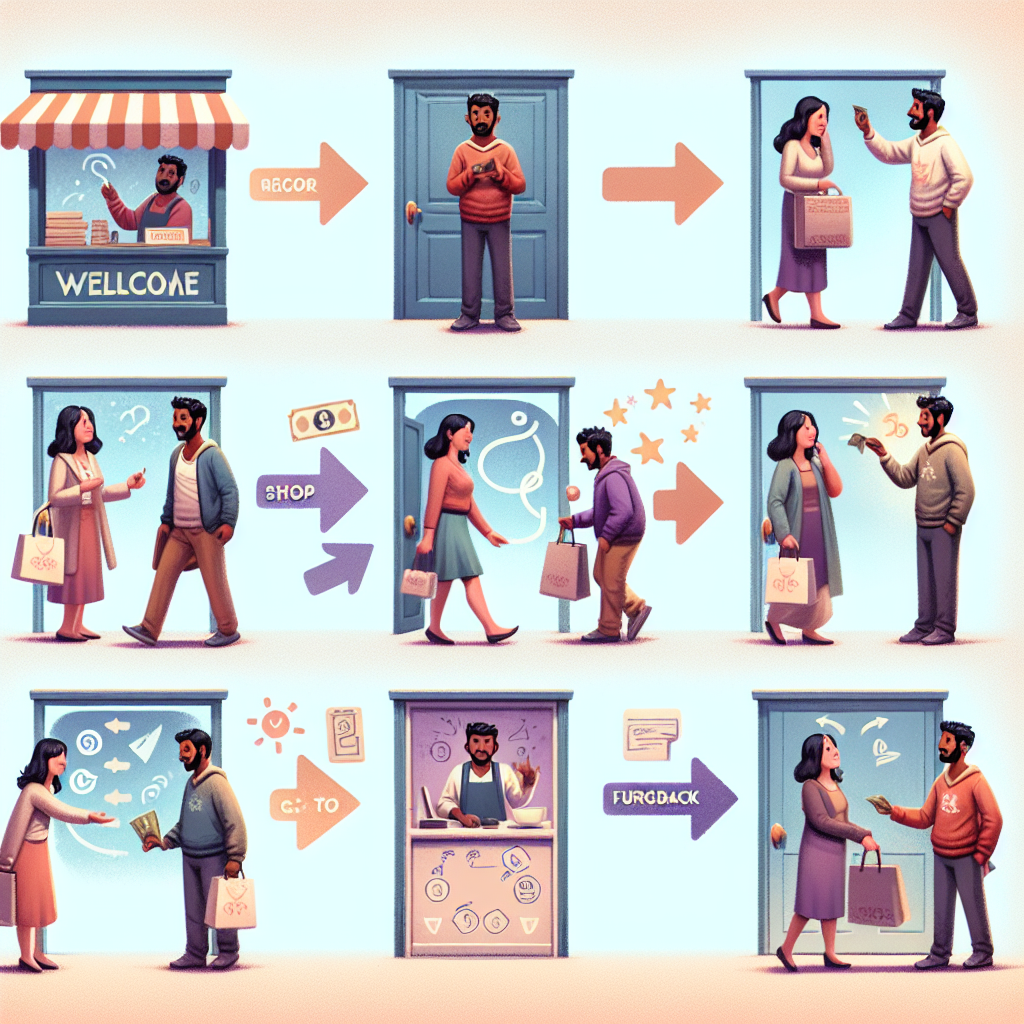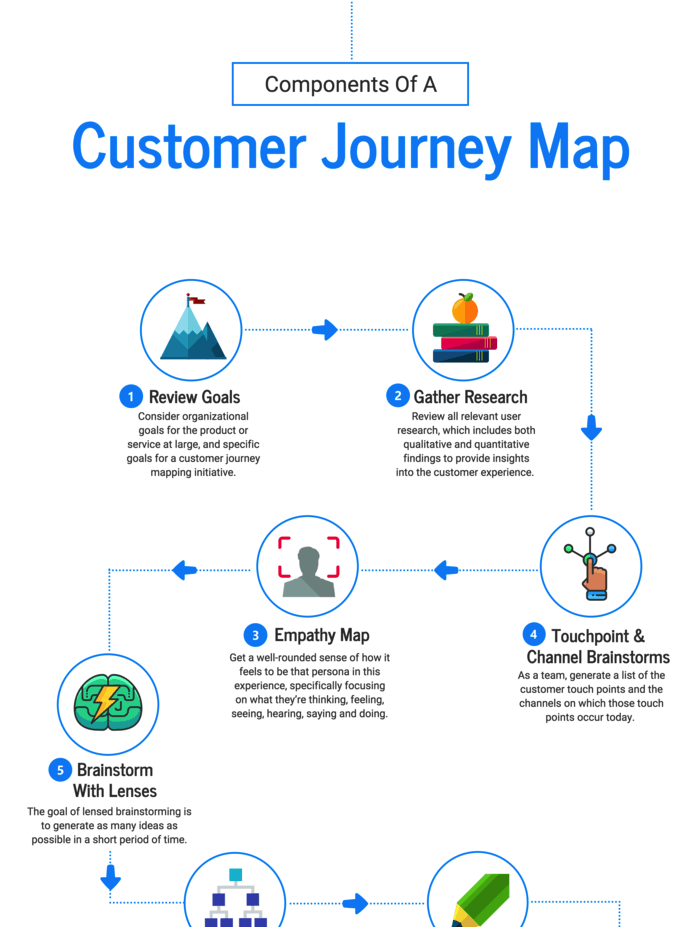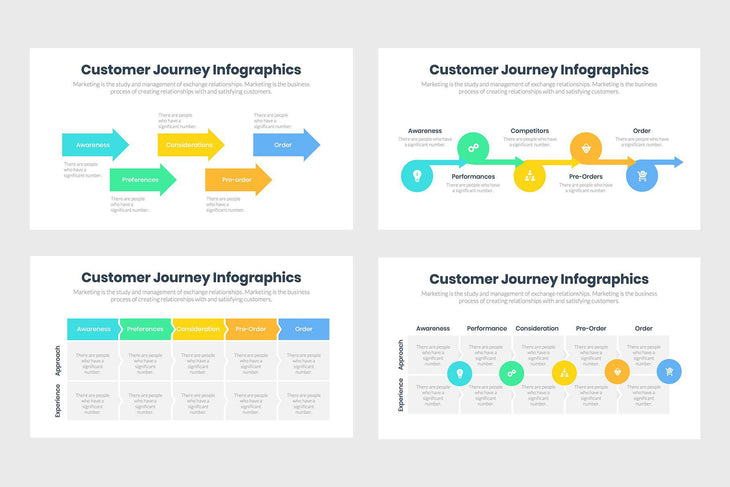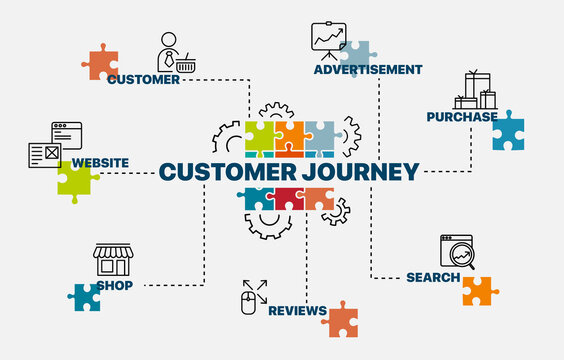Explore the mysterious path customers take from awareness to purchase in this revealing journey through the world of customer experience.

Image courtesy of via DALL-E 3
Table of Contents
- Introduction to Customer Journey
- Stages of a Customer Journey
- Mapping the Customer Journey
- Touchpoints in a Customer Journey
- Customer Emotions During the Journey
- Improving the Customer Journey
- Examples of Great Customer Journeys
- Why Should Kids Care About Customer Journeys?
- Conclusion
- Frequently Asked Questions (FAQs)
Introduction to Customer Journey
Welcome to the world of customer journeys! We’ll explore how customers feel and act when they buy or use something. It’s like a special path they take. Let’s dive into what a customer journey is all about.
What is a Customer Journey?
The customer journey is the path a person takes when deciding to buy something. It’s like a road map of their experience from the moment they become aware of a product to the final decision of purchasing it.
Why is it Important?
Understanding this path helps businesses make their customers happy. By knowing the different stages a customer goes through, companies can tailor their products and services to meet their needs and create a more positive buying experience. This ultimately leads to satisfied customers who are more likely to return and recommend the business to others.
Stages of a Customer Journey
The first stage of a customer journey is awareness. This is when a person first learns about a product. Imagine seeing a cool new toy on TV for the first time!
Consideration
Next comes the consideration stage. Here, the person starts thinking about whether they should buy the toy or not. They might wonder if it’s the right choice for them.
Decision
Finally, we have the decision stage. After thinking it over, the person decides whether to buy the toy or choose something else. It’s like making up your mind to pick your favorite game to play.
Understanding these stages helps businesses know how to make the journey smoother and more enjoyable for their customers.
Mapping the Customer Journey
The first step in mapping the customer journey is to write down each step the customer takes. This helps businesses see the entire path that a customer follows when deciding to buy something. By understanding this path, businesses can make changes to improve the overall experience for their customers.

Image courtesy of venngage.com via Google Images
Identifying Touchpoints
Touchpoints are the places where the customer interacts with the business. These interactions can happen at different stages of the customer journey and can greatly impact how the customer feels about the brand. By identifying these touchpoints, businesses can better understand where customers are having positive or negative experiences and make adjustments accordingly.
Touchpoints in a Customer Journey
Touchpoints are the moments when customers interact with a brand. These interactions can happen in various places, like ads, websites, stores, or even when talking with the staff. Each touchpoint is an opportunity for businesses to make a lasting impression on their customers.
What Are Touchpoints?
Touchpoints are like checkpoints along the customer’s journey where they connect with the brand. These can be through social media ads, email newsletters, visiting a physical store, or talking to customer service representatives. Each touchpoint influences the customer’s perception of the brand and their overall experience.
Examples of Touchpoints
Imagine seeing an enticing ad for a new video game on your favorite website. That’s a touchpoint. Or when you visit a clothing store and the friendly staff helps you find the perfect outfit – that’s another touchpoint. These interactions shape how you feel about the brand and whether you’re likely to make a purchase.
Customer Emotions During the Journey
Customers have different feelings as they go through the process of deciding to buy something. Let’s explore some of the emotions they may experience at different stages of their journey.

Image courtesy of theslidequest.com via Google Images
Excitement and Curiosity
When customers first become aware of a new product or service, they may feel excited and curious. For example, imagine someone coming across a trailer for a new video game they’ve been waiting for. The anticipation and thrill of something new can be quite exciting!
Doubts and Questions
As customers move into the consideration stage of the journey, doubts and questions may start to arise. They might wonder if this is the right choice for them or if there are better options available. Questions like, “Is this product really what I need?” or “Will it work for me?” are common at this point.
Improving the Customer Journey
Businesses can make the customer journey better by listening to feedback from their customers. When customers share their opinions and suggestions, it helps businesses understand what they are doing well and what they can improve on. For example, if a customer mentions that they had trouble navigating a website to make a purchase, the business can work on making the website easier to use. By listening to feedback, businesses show that they care about their customers’ experiences and are willing to make changes to provide a better service.
Making Changes
After gathering feedback from customers, businesses can make changes to improve the customer journey. This could involve updating a website to make it more user-friendly, training staff to provide better customer service, or offering new products or services based on customer suggestions. Making changes based on feedback shows that businesses are committed to continuously improving and providing the best experience for their customers. By listening to what customers want and making changes accordingly, businesses can create a more positive and satisfying customer journey.
Examples of Great Customer Journeys
Let’s look at some stories where companies made their customers really happy.

Image courtesy of stock.adobe.com via Google Images
Example 1: An Online Store
Imagine a toy store that wanted to make shopping for toys easy and fun. They looked at their website and realized that some customers found it confusing to navigate.
So, they made big buttons with pictures of toys that said things like “Shop Now” or “New Arrivals.” This made it super easy for kids to find what they wanted quickly. They also added a chat feature so if someone had a question, they could talk to a helpful person right away.
These changes made it a breeze for kids and their parents to shop on the website. They felt happy and excited whenever they visited the store’s site!
Example 2: A Restaurant
Picture this: a restaurant that wanted every visitor to have an unforgettable experience. They knew that great food was important, but they also wanted to create a fun and welcoming atmosphere.
So, they trained their staff to be extra friendly and welcoming, making everyone feel special. The menu was filled with tasty dishes that made customers’ mouths water. They even had special events like game nights or live music to entertain their guests.
Each visit to the restaurant was more than just a meal; it was a whole experience that left customers feeling happy and eager to come back again.
Why Should Kids Care About Customer Journeys?
Understanding customer journeys can be fun and helps you see why businesses do certain things. It’s like going on a treasure hunt to discover how companies make you feel excited or curious about a product.
Seeing Things Differently
Have you ever noticed how stores or websites make you want to buy something? By understanding customer journeys, you’ll start to notice all the little tricks they use to make you happy. It’s like being a detective uncovering clues about why you like certain things!
Learning for the Future
Knowing about customer journeys isn’t just for fun—it can also help you in the future. If you dream of starting your own business one day, understanding how to create a great customer journey will be super important. You can learn from the best and make your customers happy too!
Conclusion
In conclusion, we have explored the fascinating world of customer journeys and why they matter to businesses. We have learned that a customer journey is like a special path that people take when deciding to buy or use something. By understanding this path, businesses can make their customers happy by providing the best possible experience.

Image courtesy of www.customercontactweekdigital.com via Google Images
Throughout our journey, we have delved into the various stages of a customer journey, from awareness to consideration and finally, the decision-making process. We have also learned how mapping the customer journey can help businesses visualize and improve the overall experience for their customers.
Customer emotions play a crucial role in the journey, as customers may experience excitement, curiosity, doubts, and questions at different touchpoints along the way. By listening to feedback and making necessary changes, businesses can enhance the customer journey and create a more positive experience for their customers.
Exploring examples of great customer journeys has shown us how companies have successfully made their customers happy through innovative and customer-centric approaches. By understanding the importance of customer journeys, even kids can start noticing how businesses strive to make them happy and can gain valuable insights for the future.
In summary, by diving into the world of customer journeys, we have gained a deeper understanding of how businesses aim to create the best path for their customers, enhancing their overall experience and fostering long-lasting relationships. So, next time you visit a store or browse a website, pay attention to the journey they have designed just for you!
Want to turn these SEO insights into real results? Seorocket is an all-in-one AI SEO solution that uses the power of AI to analyze your competition and craft high-ranking content.
Seorocket offers a suite of powerful tools, including a Keyword Researcher to find the most profitable keywords, an AI Writer to generate unique and Google-friendly content, and an Automatic Publisher to schedule and publish your content directly to your website. Plus, you’ll get real-time performance tracking so you can see exactly what’s working and make adjustments as needed.
Stop just reading about SEO – take action with Seorocket and skyrocket your search rankings today. Sign up for a free trial and see the difference Seorocket can make for your website!
Frequently Asked Questions (FAQs)
What is a customer journey in simple words?
A customer journey is the steps a person takes when deciding to buy something. Imagine you’re on a treasure hunt, and each step you take brings you closer to finding the treasure, which in this case, is making a purchase!
Why do businesses care about customer journeys?
Businesses care about customer journeys because they want to make their customers happy and keep them coming back. Imagine if you had a lemonade stand, you would want all your friends to enjoy your lemonade and keep coming back for more, right? It’s the same idea for businesses!







